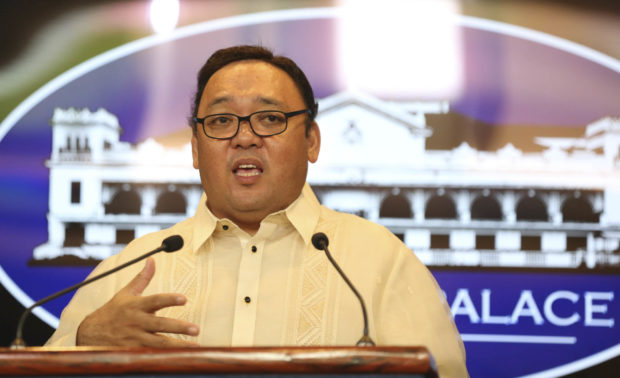While saying it’s not a big deal, the Palace spokesperson on Friday said the government would seek changes in the process of naming undersea features, like those found in the Philippine (PH) Rise.
Harry Roque said the current process being followed by the UN-linked agency International Hydrographic Organization (IHO) in naming undersea features was controlled only by rich countries capable of conducting undersea exploration.
Roque’s statement came amid the controversy over the naming by China of seamounts, or mountains rising from the deep sea floor in PH Rise.
Naming rights
Countries that are not members of the Subcommittee on Undersea Feature Names (SCUFN), which submits proposed names to IHO, are not notified of the names given to undersea features located in their territories because the process does not require it, according to Roque.
The Philippines is not a member of SCUFN, which is composed of Germany (chair), China, Japan, South Korea, New Zealand, Argentina, Chile, Mexico, Brazil, Canada, Italy and Russia.
“If naming rights would depend on a country’s capability to conduct scientific research and exploration, then only the rich countries would be able to name [the features],” Roque said.
China submitted names for features in the Philippine Rise to SCUFN in October 2015 and September 2017. IHO approved the names in 2017.
‘Siopao,’ ‘ampao’
But Roque, a lawyer with a known expertise in international law, maintained that having Chinese names for undersea features in the Philippine Rise was no big deal.
“China has named many things—‘siopao,’ ‘siomai,’ ‘ampao,’ pechay, ‘hototay,’” said Roque, referring to some Filipino food items. “This does not mean they are getting ownership of these.”
But another official of the Duterte administration, National Security Adviser Hermogenes Esperon Jr., said the Philippines had already served notice to China that giving Chinese names to Philippine Rise features was unacceptable.
In a statement on Thursday, Esperon said China’s naming of seamounts in the Philippine Rise was done “without due consultation with the Philippine government.”
Chinese names
The Chinese names Jinghao (Siren) and Tianbao (Fill In) had been adopted for two seamounts in the Philippine Rise in September 2016, Esperon said.
The government, he added, raised an objection directly with China on Feb. 13 during a meeting of the Philippines-China Bilateral Consultative Mechanism, a body created to serve as venue for dialogue on territorial disputes in the West Philippine Sea.
“We do not recognize the Chinese names,” Esperon said.
The Chinese names will appear on maps of the Philippine Rise that will be used for navigation or research and give the impression that the undersea features belong to China. —WITH A REPORT FROM NIKKO DIZON
